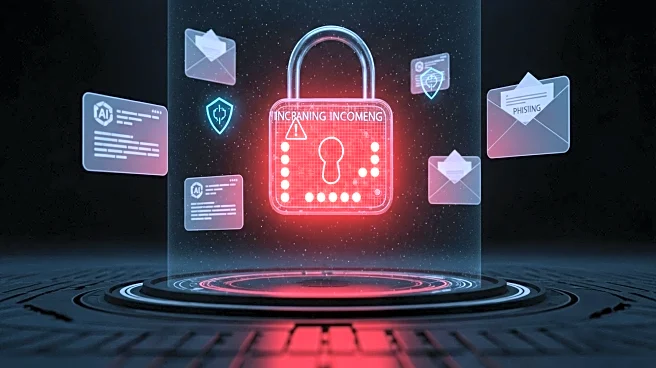What's Happening?
A recent survey conducted by SecurityScorecard reveals that 71% of Chief Information Security Officers (CISOs) have faced at least one significant third-party cybersecurity incident in the past year. The survey, which included responses from 546 IT directors and CISOs, highlights the growing risk associated with immature supply chain cybersecurity practices. The involvement of third parties in breaches has notably increased, doubling from 15% to nearly 30% over recent years, as supported by data from the 2025 Verizon Data Breach Investigations Report. This trend underscores the need for more proactive risk management strategies beyond mere compliance checklists.
Why It's Important?
The rise in third-party security incidents poses significant challenges for U.S. businesses, particularly in sectors heavily reliant on complex supply chains. As third-party involvement in breaches continues to grow, companies face increased risks of data loss, financial damage, and reputational harm. This situation calls for enhanced cybersecurity measures and more rigorous third-party risk management practices. Organizations that fail to address these vulnerabilities may find themselves at a competitive disadvantage, as they struggle to protect sensitive information and maintain customer trust.
What's Next?
To mitigate the risks associated with third-party cybersecurity incidents, companies are likely to invest in more robust risk management frameworks. This may include adopting advanced technologies for real-time threat detection and response, as well as implementing stricter vendor assessment protocols. Industry leaders and policymakers may also push for regulatory changes to ensure that third-party cybersecurity practices are standardized and enforced across sectors. As awareness of these issues grows, businesses will need to prioritize cybersecurity resilience to safeguard their operations and data.
Beyond the Headlines
The increasing frequency of third-party breaches highlights broader ethical and legal implications for businesses. Companies must navigate complex relationships with vendors and partners, ensuring that all parties adhere to stringent cybersecurity standards. This situation also raises questions about accountability and transparency in the event of a breach, as organizations must balance the need for security with the rights and privacy of affected individuals.











